Overview
First impression of Grey-crowned crane
Meet the Grey Crowned Crane (Balearica regulorum), a charming bird that adds a touch of elegance to Africa’s scenery. As the primary species in its genus, its cool mix of gray, white, and gold feathers, plus a fancy crown on its head, this crane is a real showstopper. You can find it in different places like grasslands and wetlands, bringing a special charm to Africa’s varied landscapes. Just like the African Fish Eagle, it is another cool symbol of the beauty you can find in Africa’s wild places.
Curious about vibrant Sunbird ?
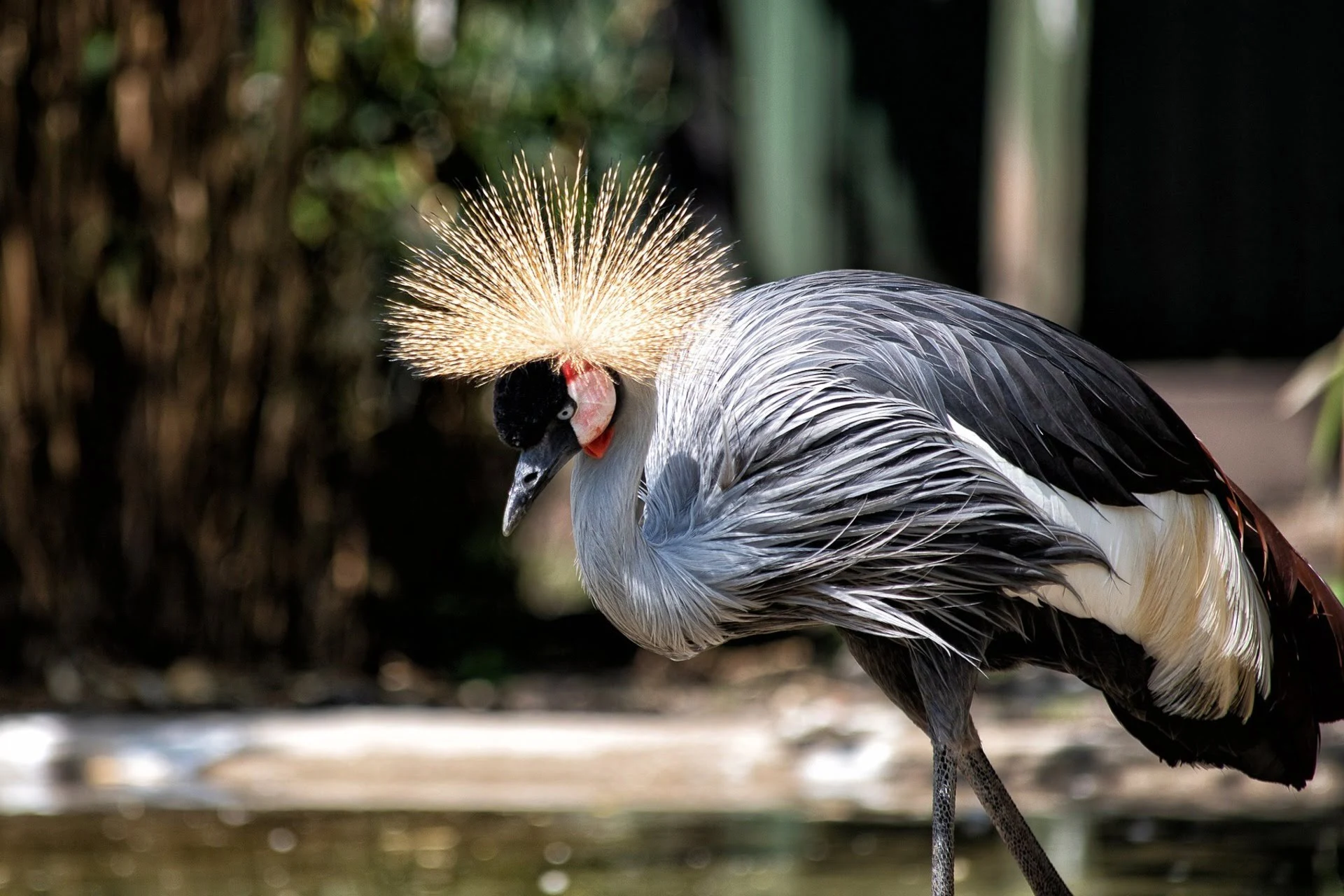
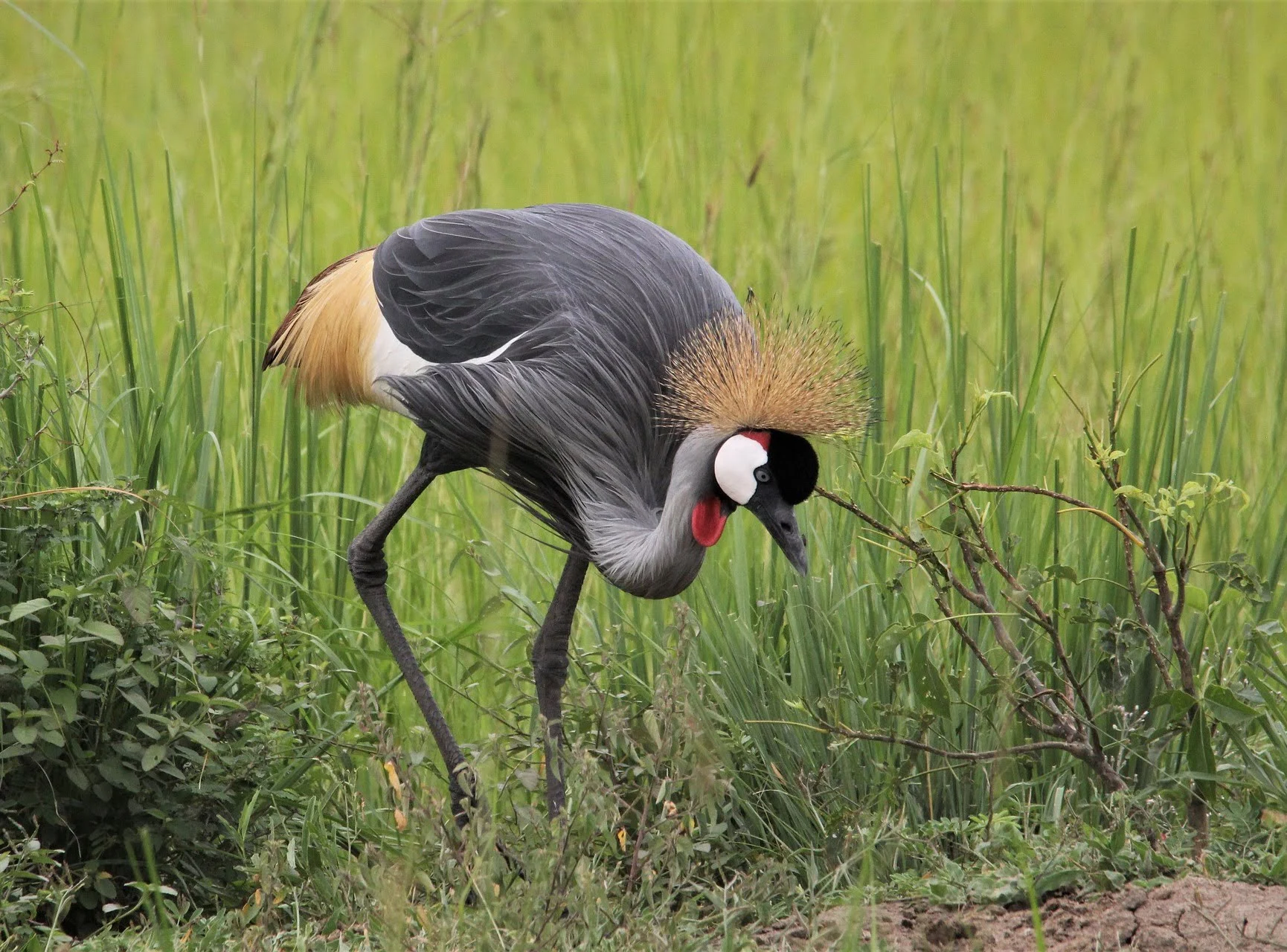
Appearance
How does Grey-crowned crane look like?
The Grey Crowned Crane is a really cool bird that you can find in Africa. It’s got this awesome mix of colors – gray, white, and gold – that make it look super fancy. But the real showstopper is the crown on its head, all golden and stylish. Imagine this bird strutting around with its cool colors and that regal crown – it’s like a little fashion icon in the bird world! This crane is a bit taller than your average bird, and it has a long neck that makes it look even more elegant. Just picture this graceful bird, with its unique colors and crown, strolling around and catching everyone’s attention. It is a true gem in the wild!
Life Span
upto 30 Years
Weight
2.7-3.2 KG
Height
1.5 Meters
Wingspan
2.3 Meter
Beak Size
20 CM
Tail Length
28-30 CM
Diet and Feeding Habits
What Grey-Crowned Crane like to eat?
The Grey Crowned Crane is not picky when it comes to food. They are omnivores. It enjoys a varied diet that includes insects, small animals, seeds, and plants. These cranes are skilled foragers, using their long bills to pick up tasty bites from the ground. While they’re not fishers like some birds, the Grey Crowned Crane is quite adaptable, making the most of what’s available in their diverse habitats, from insects to seeds and everything in between.
Eager to know about vibrant Flamingo ?
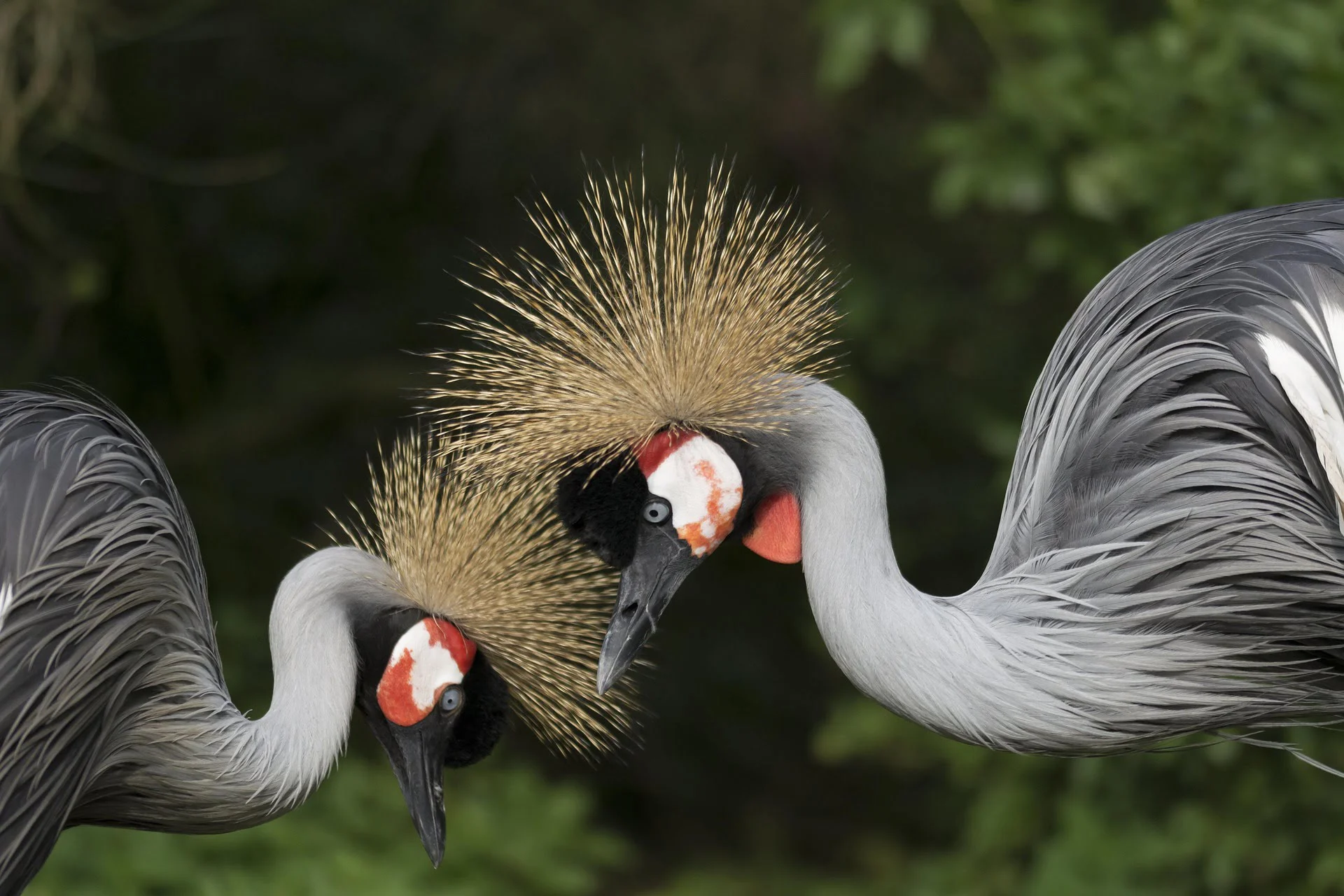
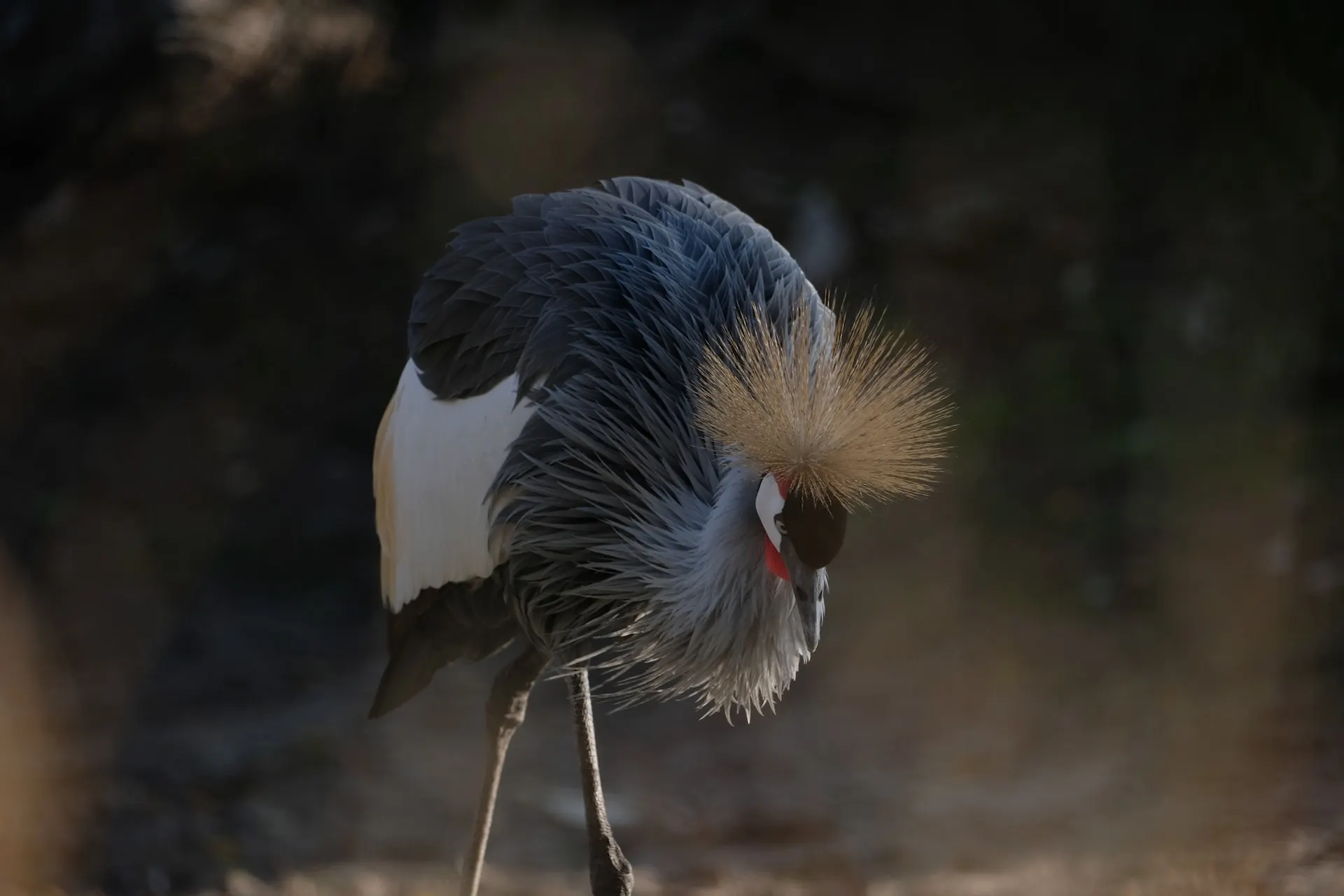
Habitat and Distribution
Where you can find Grey-Crowned Crane?
The grey crowned crane is native to Eastern and Southern Africa. You can find this distinctive bird in various countries across the region, including Uganda, Kenya(Masai Mara and Lake Nakuru), Tanzania(Serengeti), Rwanda(Akagera), Zambia, Zimbabwe, and South Africa. Its preferred habitats include open grasslands and wetlands, making it commonly spotted in both natural and cultivated landscapes. The grey crowned crane’s presence in these diverse African countries reflects its adaptability to different ecosystems within its range.
Fun fact about Grey-Crowned Crane
They’re ancient royalty: Grey Crowned Cranes are the oldest crane species, having graced the Earth for millions of years longer than their crane cousins!
They’re tree-dwelling rebels: Unlike most cranes who prefer the ground, Grey Crowned Cranes are the only ones who can chill and roost in trees.
They’re fashion icons: Forget the fancy feathers and bright colors, Grey Crowned Cranes rock a sleek grey body with white accents and a touch of red on their wattles. Simple yet sophisticated!
They’re national treasures: These majestic birds hold a special place in Uganda, where they’re proudly honored as the national bird.
Migration Pattern
Where do Grey Crowned Crane Roam?
Grey crowned cranes usually stay in one place instead of traveling long distances. They move around a bit within their home area, especially when looking for food or better living conditions. Unlike some birds that fly really far during migration, grey crowned cranes prefer to stay close to where they find enough food and suitable habitats. This behavior shows they like stability and stick to specific regions in Eastern and Southern Africa.
Are you excited to see Bee-Eaters ?
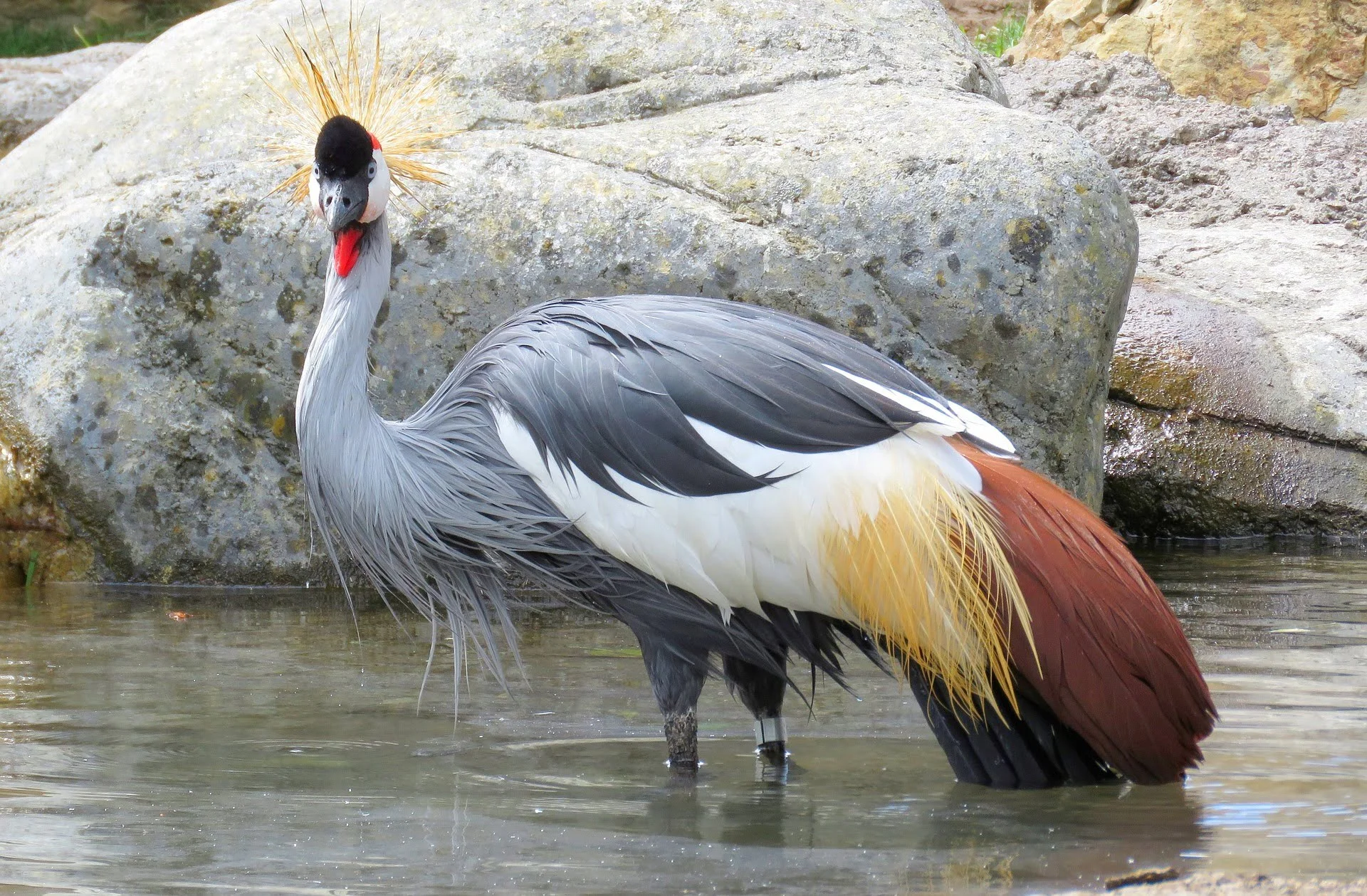
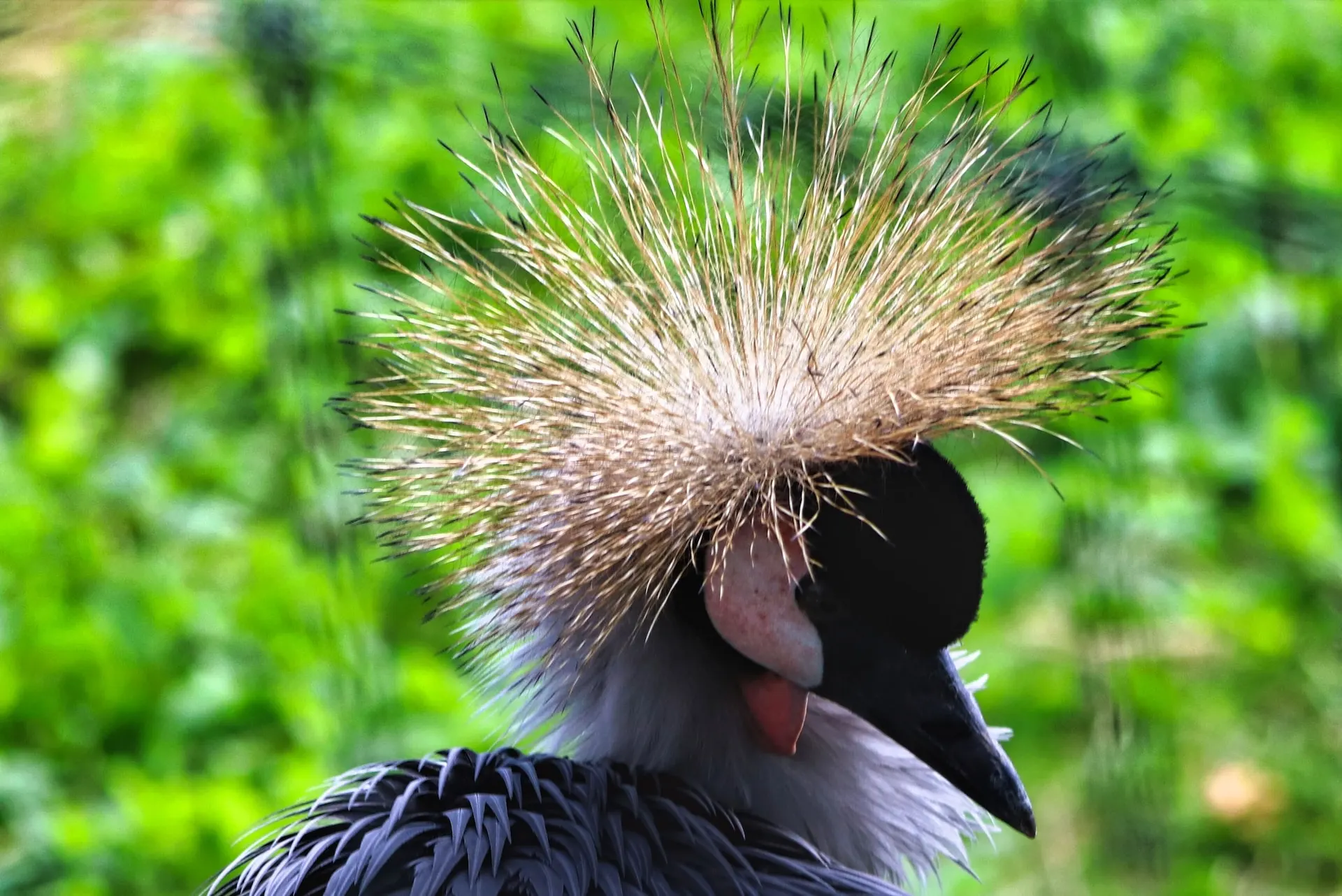
Vocalization Insights
Distinctive Call of the Grey Crowned Crane
Grey crowned cranes make different sounds to talk to each other. They have loud trumpeting calls that they use to communicate over long distances. During times of courtship, they use honking sounds, letting others know they’re ready to mate. When they’re excited or alarmed, they may make rattling calls. So, these various sounds help grey crowned cranes interact with each other, express their feelings, and communicate important messages within their group.
Cultural Significance
Cultural importance of Grey Crowned Crane
Among the BaTonga people of Zambia, the grey crowned crane is linked to rainmaking rituals, emphasizing its role in spiritual practices tied to agriculture.
In South Africa, the grey crowned crane is celebrated in local folklore and art, reflecting its status as a symbol of grace and beauty.
Throughout Eastern and Southern Africa, the crane’s distinctive appearance and behavior have inspired various artistic expressions, including dance, music, and storytelling, further embedding its cultural significance.
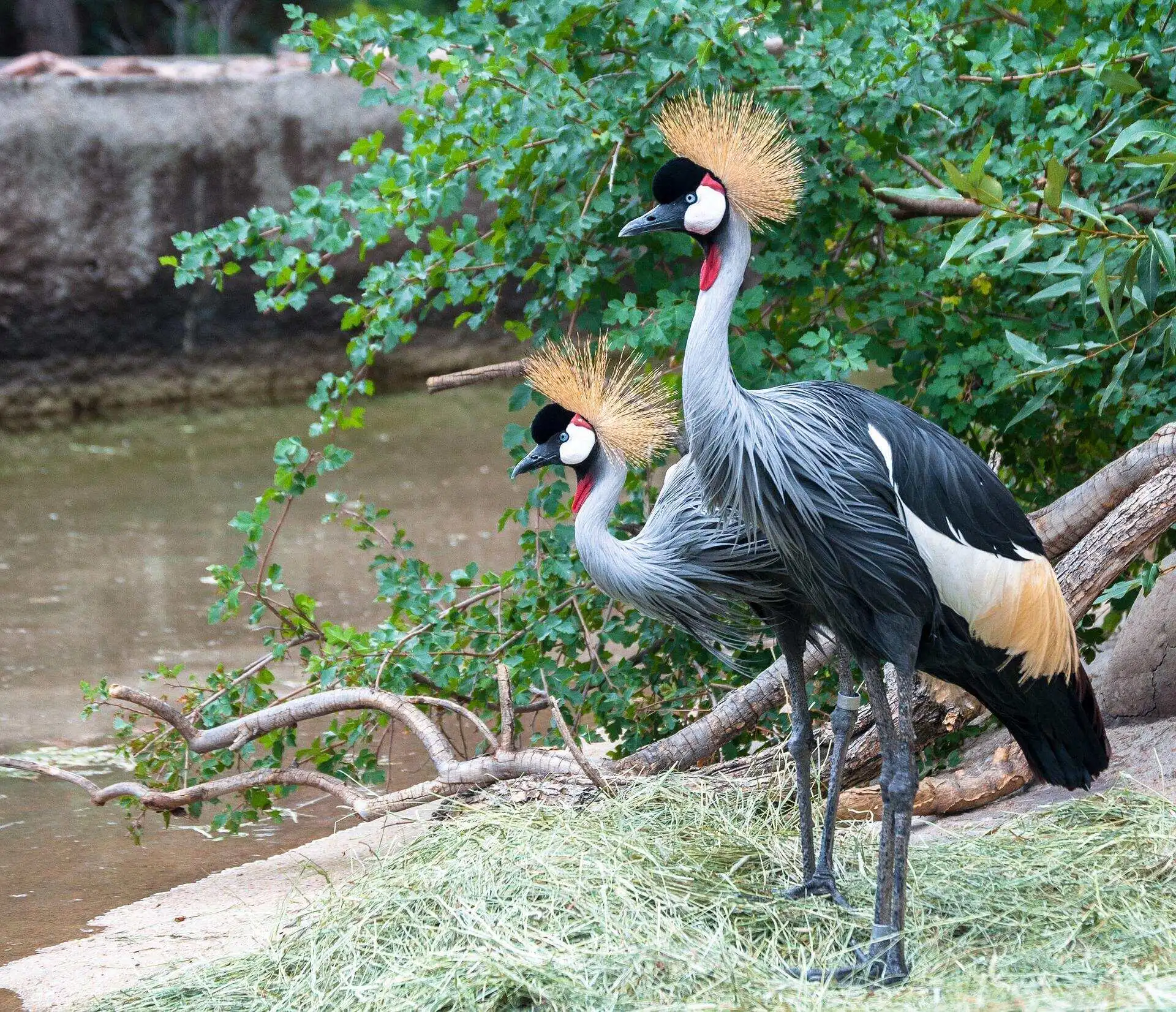

Common Crane
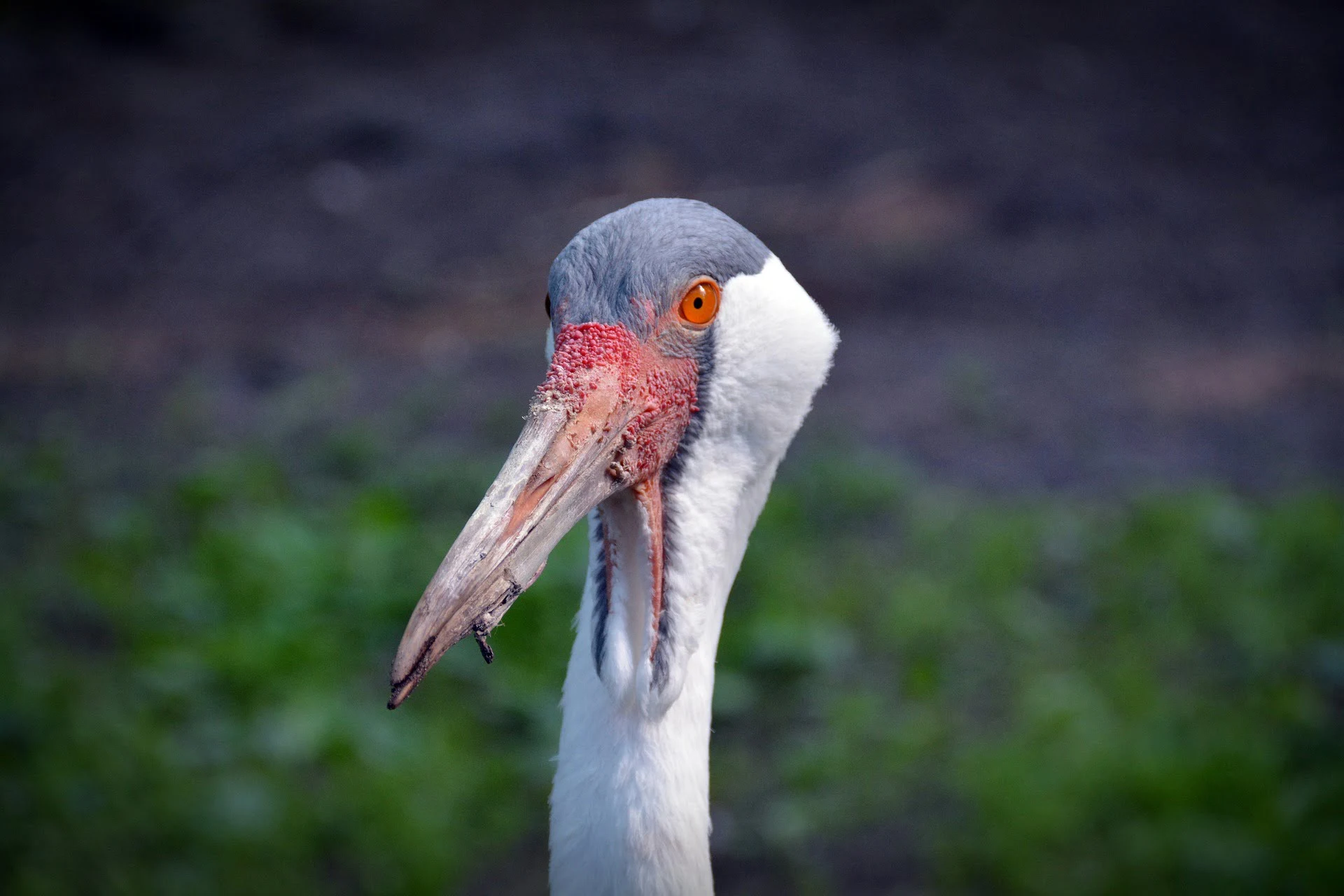
Wattled Crane
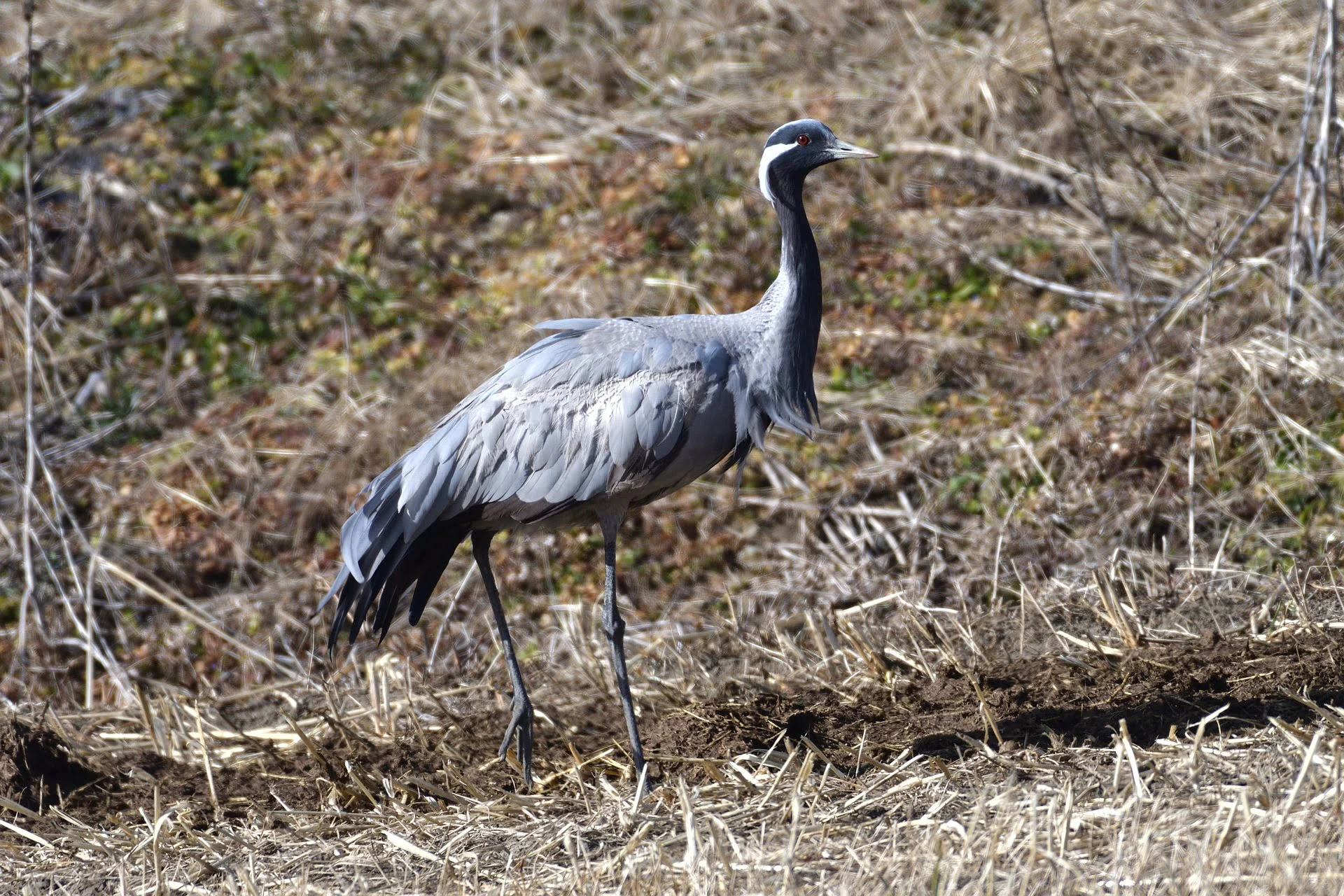
Demoiselle Crane
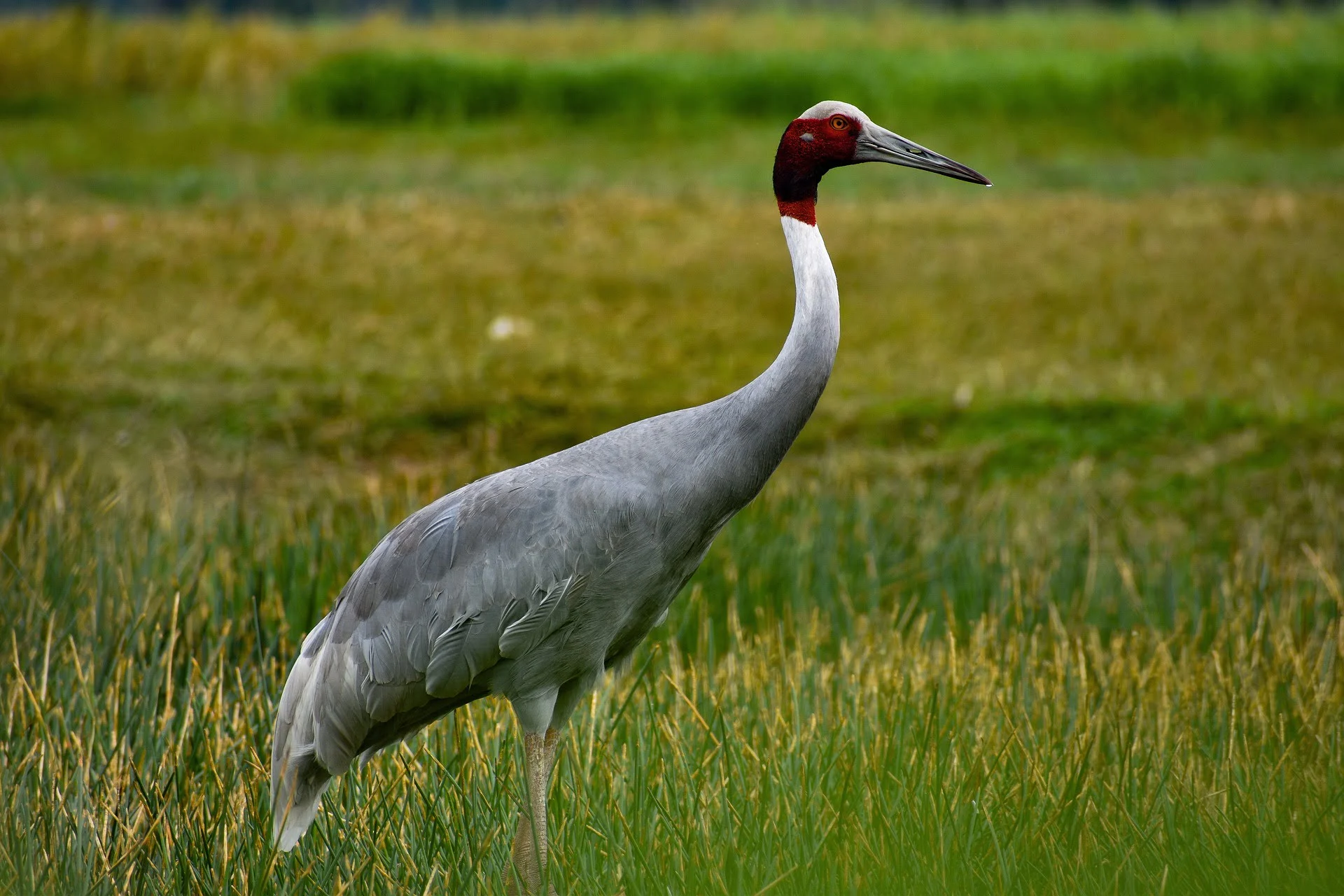
Blue Crane
Ready to catch a glimpse of the majestic Grey Crowned Crane? Connect with our team.
Frequently Asked Questions
What does a Grey Crowned Crane look like?
They are tall, elegant birds with a grey body, a white neck and chest, and a long, black bill. Their heads are adorned with a black and white crown, and they have red wattles on their throats. They stand about 5 feet tall and have a wingspan of up to 8 feet.
Why are they called "Crowned" Cranes?
The name “Crowned Crane” comes from the distinctive crown of golden feathers on the bird’s head. This feature, along with its elegant appearance, makes it a visually striking species.
Do Grey Crowned Cranes migrate?
Grey Crowned Cranes are generally non-migratory, but their movements may be influenced by the availability of water and food resources. In some regions, they may exhibit local movements in response to changing conditions.
Are Grey Crowned Cranes endangered?
Yes, Grey Crowned Cranes are classified as “Endangered” by the International Union for Conservation of Nature (IUCN) due to habitat loss, pollution, and the illegal pet trade.
How do I book safari with Big Cats Safari?
Booking a safari with us is a straightforward process. Simply visit our website, select your preferred destination and safari package, and follow the step-by-step booking instructions provided. It’s quick and easy.
